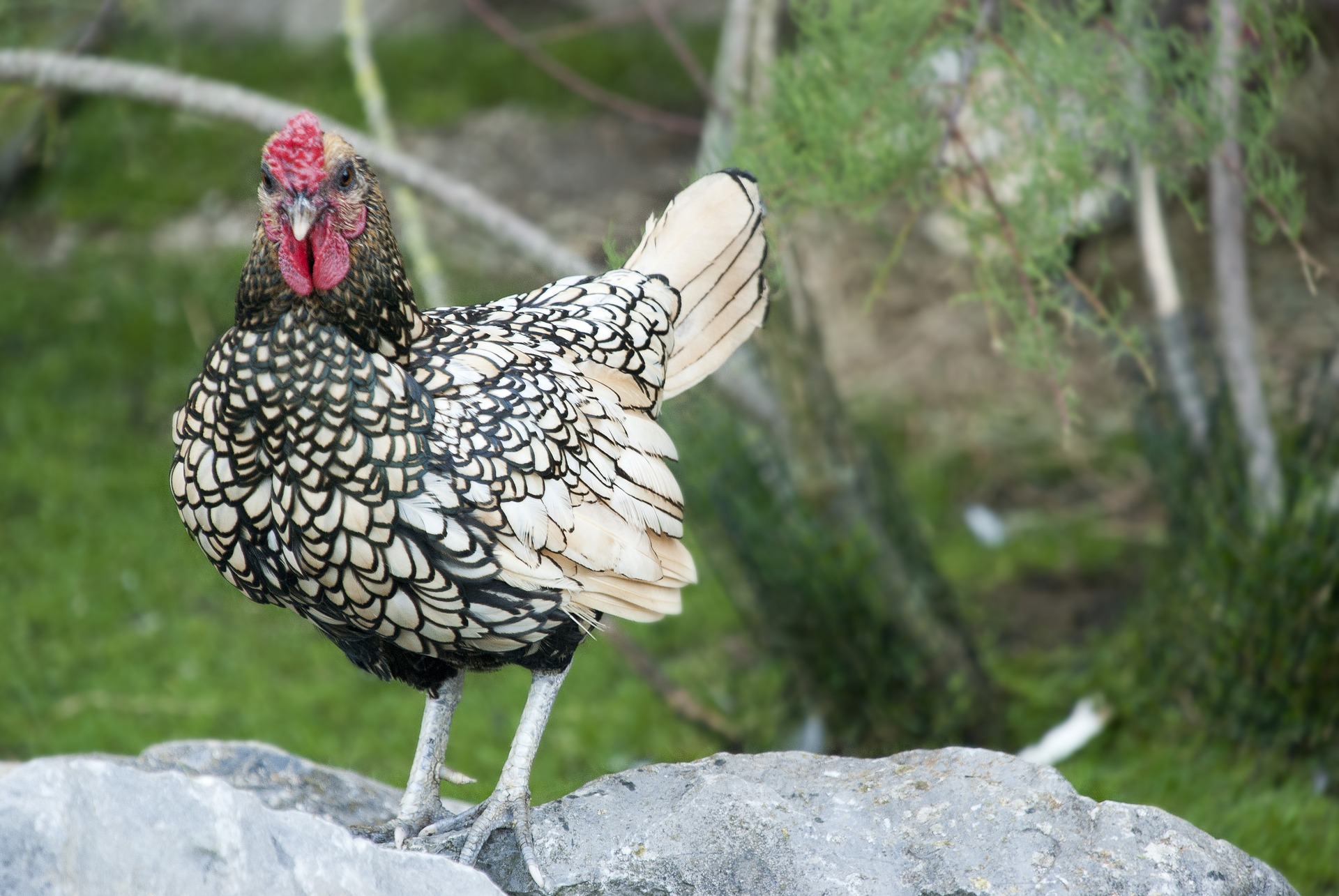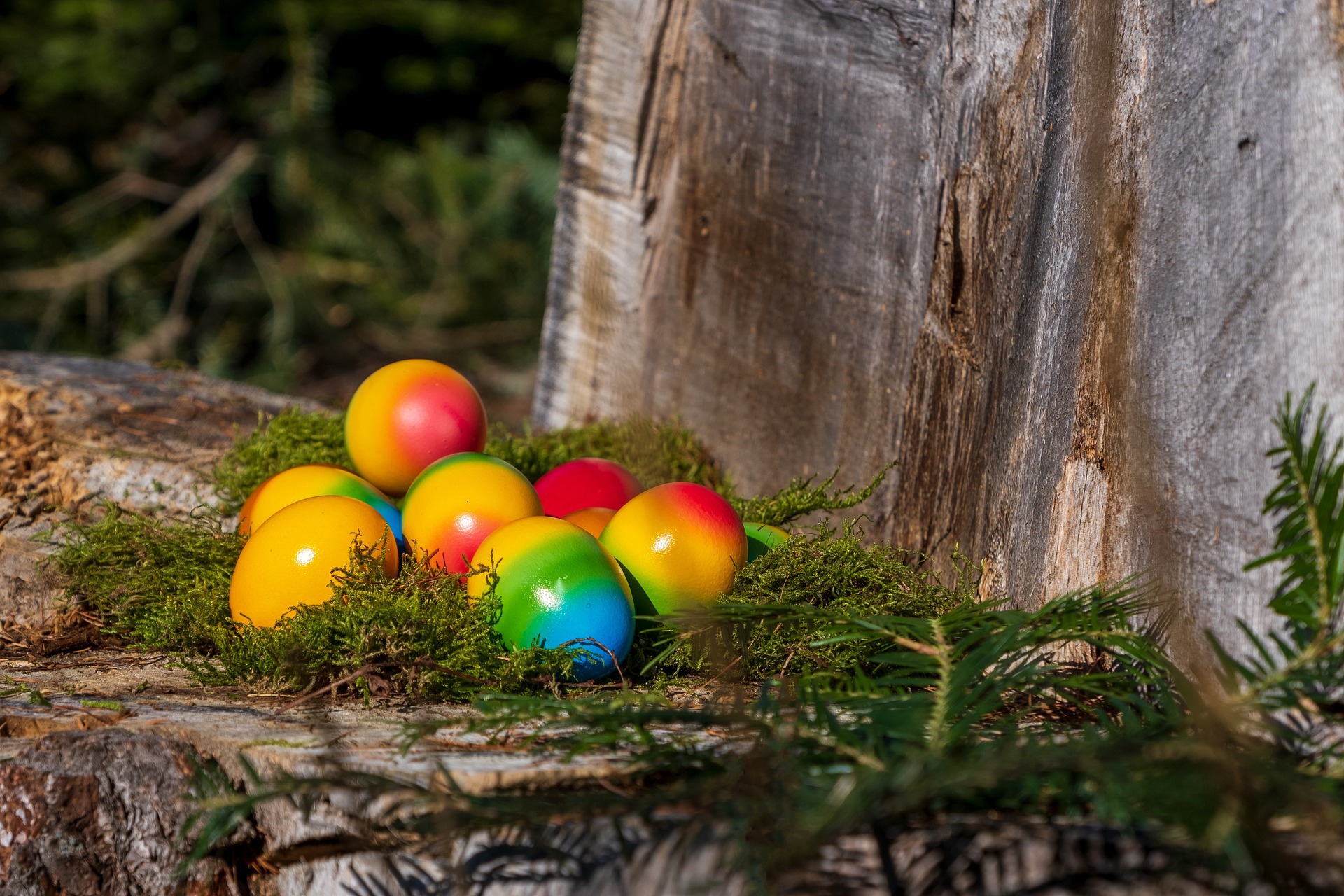Ranboggy Hen
Ranboggy Hens are a species of common poultry livestock. They are known for laying rainbow-colored eggs, although their plumage is far less colorful.
Basic Information
Anatomy
Ranboggy Hens are a small breed of fowl. The males weigh only 24 ounces on average, while the females average out at around 22 ounces. They have short backs and large chests, which creates an angular look.
The feathers are white with black outlines. The legs are unfeathered with slate-blue skin and dark talons. The beak is also dark in color. The combs, earlobes, and wattles of this type of chicken are a mulberry-purple color. Male Ranboggies have two long tail feathers that are colored with the same rainbow banding as the eggs.
Genetics and Reproduction
Ranboggy Hens will lay, on average, six of their mid-sized eggs per seven-day week. Hens will lay from 28 weeks old until they are roughly six years old, if provided with the proper care.
An older hen will lay less than a younger hen on average. As such, younger hens are typically those allowed to brood.
Dietary Needs and Habits
Ranboggies are omnivorous birds, and will accept both seed and insects as well as forage. These birds will often scratch and peck at loose dirt to sift through it for insects and other edibles. Many Ranboggy keepers recommend giving the chickens a few square yards of foraging room.
Behaviour
Ranboggy hens are of mild temperament, but a flighty nature. They will often fly short distances from one roost to another at the slightest whim, and seem to enjoy running.
They are friendly and sociable animals, often living in large flocks and associating closely with any people who decide to feed them. Handlers have stated that many of their hens have bonded with them such that the handler can simply pluck the eggs from under the hen without a fight.





Comments